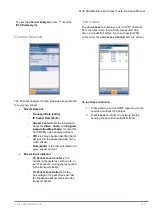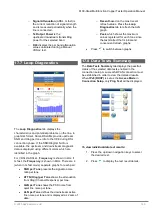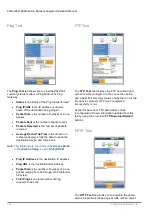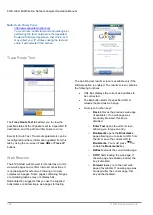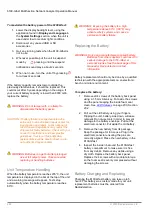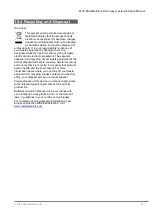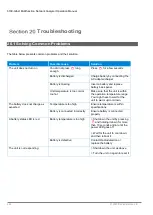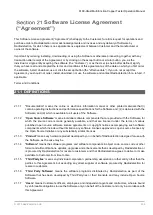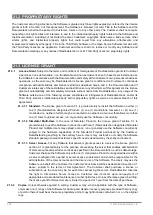
6100-Gfast Multifunction Copper Tester Operation Manual
© 2020 Radiodetection Ltd
199
Maintenance
19.1 General Maintenance
The 6100-Gfast has been designed to be a rugged and
lightweight piece of test equipment. The 6100-Gfast
LCD screen should only be cleaned using a soft, lint-
free cloth and an anti-static cleaning solution. Ordinary
detergents and other cleaning solutions may cloud or
scratch the surface and should be avoided.
To help ensure long, trouble-free operation:
Keep the unit free of dust.
Clean the unit casing and front panel with a
cloth slightly dampened with water.
Store unit at room temperature in a clean and
dry area. Keep the unit out of direct sunlight.
Avoid high humidity or significant temperature
fluctuations.
Avoid unnecessary shocks and vibrations.
If any liquids are spilled on or into the unit, turn
off the power immediately and let the unit dry
completely.
WARNING. The use of controls, adjustments and
procedures other than those specified
herein may result in exposure to hazardous
situations or impair the protection provided
by this unit.
19.2 Recalibrating the Unit
Radiodetection manufacturing and service center
calibrations are based on the ISO/IEC 17025 standard
(
General Requirements for the Competence of Testing
and Calibration Laboratories
). This standard states that
calibration documents must not contain a calibration
interval and that the user is responsible for determining
the re-calibration date according to the actual use of
the instrument.
The validity of specifications depends on operating
conditions. For example, the calibration validity period
can be longer or shorter depending on the intensity of
use, environmental conditions and unit maintenance,
as well as the specific requirements for your
application. All of these elements must be taken into
consideration when determining the appropriate
calibration interval of this particular Radiodetection
product.
Under normal use, the recommended interval for your
6100-Gfast is:
2 years
.
For newly delivered units, Radiodetection has
determined that the storage of this product for up to six
months between calibration and shipment does not
affect its performance.
To help you with calibration follow-up, Radiodetection
provides a special calibration label that complies with
the ISO/IEC 17025 standard and indicates the unit
calibration date and provides space to indicate the due
date. Unless you have already established a specific
calibration interval based on your own empirical data
and requirements, Radiodetection would recommend
that the next calibration date be established according
to the following equation:
Next calibration date = Date of first usage (if less
than six months after the calibration date) +
Recommended calibration period (2 years)
To ensure that your unit conforms to the published
specifications, return it to Radiodetection for calibration.
Calibrations are performed using standards traceable
to national metrology institutes.
19.3 Battery
The 6100-Gfast is equipped with a Lithium-Polymer
battery.
WARNING. Recharge the battery using only the 6100-
Gfast and with the battery properly installed
in the unit.
WARNING. Never open the battery back panel of the
6100-Gfast without reading the Replacing
the Battery section in this chapter.
When fully charged, the battery should provide
between 3 and 10 hours of power depending on
different factors such as: type of tests performed,
display backlight level, and connected accessories.
Note: When the battery level is very low, tests cannot
be performed. Plug in the AC/DC adapter for
continued operation and to recharge the battery.
However, the charge speed will be reduced. If
the voltage detection beeper sounds when the
unit is plugged in, remove the AC/DC adapter.

